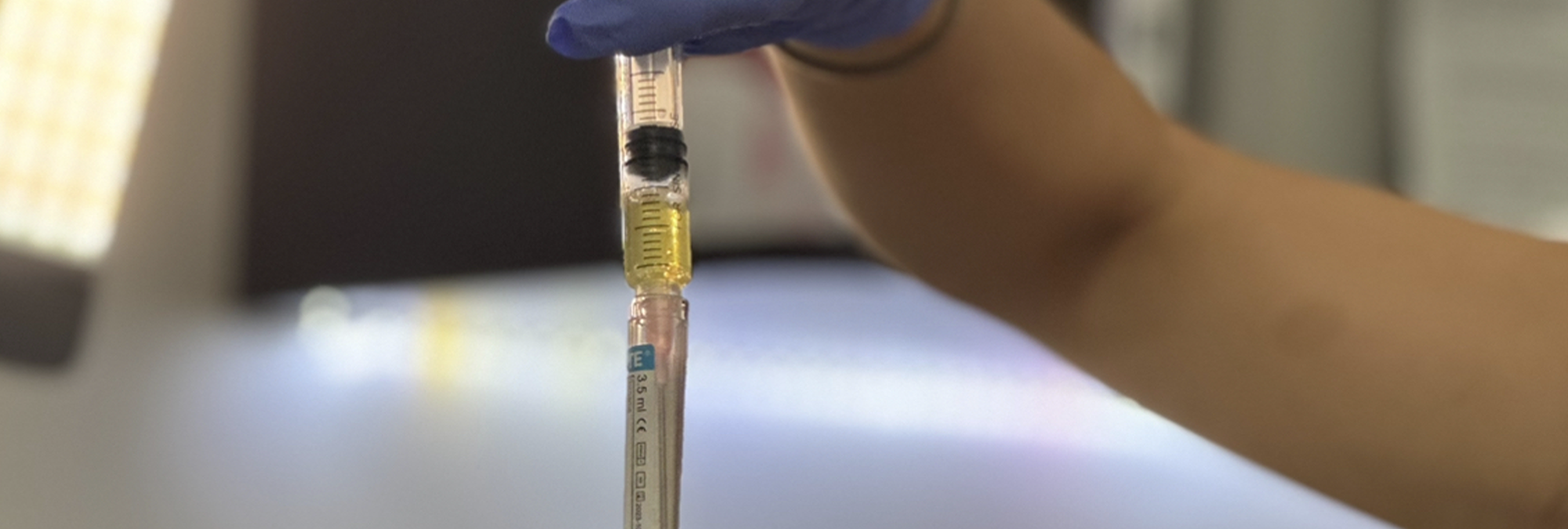An interview with Vienna del Sol Garcia and Alberto Lopez Acosta
This month, our Marketing Director, Anastasia, visited the Relax Spa in Coral Gables, FL to experience a Platelet Rich Plasma treatment for thinning hair. We chatted with spa owners Vienna and Alberto to get the rundown on this emerging technology.
Can you describe the PRP process?
The PRP (Platelet Rich Plasma) treatment process starts with a simple blood draw. We then use a centrifuge to produce PRP which contains a mixture of concentrated platelets, including cytokines and growth factors, and anti-inflammatory properties. It is primarily these growth factors that are beneficial for the use of PRP in treating hair loss, thinning, and alopecia. The final product of PRP is finally injected using either a microneedle device or small individual injection technique; and or combination to the scalp.
What are the benefits of PRP?
While research is still ongoing in regards to the effects of PRP on hair loss, thinning, and alopecia for both men and women; we have seen great results in practice. The growth factors in PRP obtained from our own blood helps in promoting thicker healthier hair, and preventing hair loss. Mainly, PRP injections to the scalp directly increase blood flow to the area boosting the quality of the hair follicles. We use PRP for several aesthetic purposes, yet hair PRP treatments have proven to be a very effective way to boost overall hair health, and specifically targeting conditioned such as alopecia.
How long do results last?
Results can vary depending on the specific condition being treated, age of the patient, and whether male or female. Results typically last 1 -24 months, depending on the protocol used.
Is there a follow up, or series of treatments, to get maximum results?
Specific treatment plans of hair PRP can be tailored to each patient. The general recommendation is three sessions of hair PRP, performed one month apart, with one annual maintenance or follow up session.
Who is the ideal client for PRP?
Anyone who is experiencing hair thinning, breakage, alopecia, or overall decreased quality of hair is a good candidate for hair PRP injections. Patients who are not recommended to undergo this treatment are those that have abnormal platelet counts or platelet disorders. We may not inject PRP if you have cancer, an active infection, or anemia.
Are there any downsides or factors for clients to consider before the treatment?
The most common downsides of the hair PRP injections are pain of the injection sites, for which a topical anesthetic cream can be applied prior to the treatment, to decrease discomfort. Another downside is minor bruises or tenderness to the scalp areas injected. Overall, it is a very safe treatment, as it originates from the patient’s own blood and decreases the chances of any allergic or adverse reaction.
What is the recommended home care after PRP treatments?
Post scalp hair PRP injections instructions are as followed: Do Not wash your hair or use direct shower pressure to scalp for 24 hours. After 24 hours you may gently wash your hair with a sulfate free shampoo. Do Not wear hats, headbands, or ponytails for 3 days. Do Not expose yourself to long periods of the sun. Do not dye your hair or use harsh chemical processes for one week.













